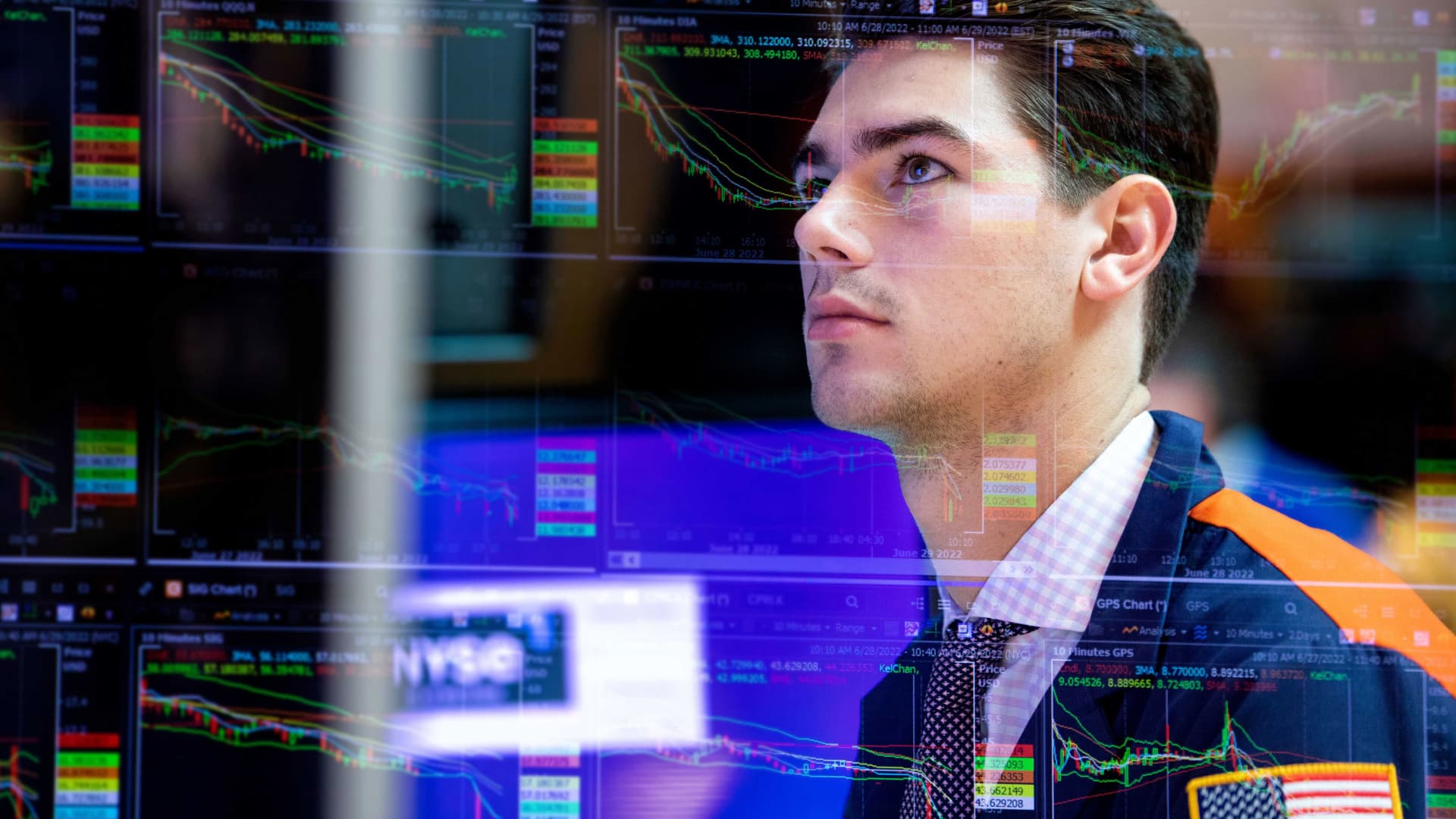
Traders on the floor of the NYSE, June 29, 2022.
Source: NYSE
A multitude of factors conspired to generate the stock market’s worst first-half since 1970, but they all emanated from one word: Inflation.
The cost of living started the year running at levels the U.S. had not seen since the early 1980s.
Worse, Federal Reserve officials, armed with full-year forecasts of “transitory” inflation that now seem almost comically inaccurate, fell behind the curve, endangering a market and economy still fragile from the Covid pandemic.
Six months later, the damage has been severe if something short of catastrophic: An S&P 500 down nearly 20%, a symbol of how risk investing across the spectrum, from crypto to IPOs and even some areas of the commodities market, has collapsed.
“It was inflation. That’s the Fed’s nemesis,” said Quincy Krosby, chief equity strategist for LPL Financial. “It was the Fed staying with its ‘transitory’ mindset of inflation easing. … It was central bank largesse, it was government largesse. The Fed was surprised [about inflation] even just a few days before its last meeting. That’s how we got here.”
Supply chain constraints that the Fed thought would ease were behind much of inflation’s rise. Demand has simply overwhelmed shippers’ ability to get products to market, resulting in much higher prices. The Russia attack on Ukraine exacerbated some of those problems, driving up energy and food prices. Shopper confidence has crumpled and inflation expectations, among consumers if not in financial markets, have surged.
Missed signals, mass damage
After falling behind the inflation curve, the Fed has now been forced to play catch-up in the form of interest rate hikes worth 1.5 percentage points, with more to come. Many on Wall Street have questioned why the Fed hasn’t been even more aggressive.
Uncertainty about the path ahead has compounded the nettlesome impact of inflation running by one Labor Department measure at 8.6%, the highest since December 1981. As recently as December 2021, the Fed, which targets inflation at 2%, was projecting its preferred headline measure to run at 2.6% this year; new data Thursday showed it at 6.3%, with core inflation excluding food and energy even running at 4.7%.
Fed Chair Jerome Powell “needs to regain control of the inflation narrative … now he’s losing total control,” Allianz economic advisor Mohamed El-Erian recently told CNBC. “He’s got to move because, if he doesn’t, he’s going to be chasing the market and he’s not going to get there.”
Besides the damage to the big stock market averages such as the S&P 500 and the Dow Jones Industrial Average, which is down more than 14% year to date, there has been carnage everywhere.
The Nasdaq, which has a stronger tech focus, has suffered losses approaching 30%. Bitcoin, the highest-profile cryptocurrency, has tumbled nearly 60%. Copper, often considered an economic bellwether, has fallen more than 15% and cotton has slumped more than 13%.
Capital markets also have taken a beating.
Special purpose acquisition companies, which provide blank checks from investors and were all the rage last year, have fallen on hard times. CNBC’s Post SPAC Index, which follows the vehicles from their initial listing through either a merger target or live deal, is having its worst month since being introduced in November 2020, down nearly 25%.
Private firms have been slow to come to such a dismal market. Initial public offering volume has slumped 46% in the first half, with revenues down 58% from the same period a year ago, according to Ernst & Young.
History offers hope
So what will stop the bleeding?
“For the market, the old expression is that the market gets the news first. All the market is waiting for is for the Fed’s rhetoric to soften,” LPL’s Krosby said. “That would move the market towards expecting perhaps a pause or maybe even [interest rate increases of] 50 basis points or 25 basis points, depending on where we are.”
Markets, though, expect another 75 basis point rate hike in July, same as the one in June. A basis point is one one-hundredth of 1 percentage point.
About the only things that has worked this year have been certain areas of the commodities markets, such as oil, natural gas and some agricultural products. Those gains, though, have been offset by huge losses in everything from banks to automakers to building products.
Still, there’s reason for optimism.
When the S&P 500 plunged 21% in the first half of 1970, it promptly reversed those losses to gain 26.5% in the second half and eke out a gain for the year.
“You trade and invest in the markets you have, not the ones you want,” Krosby said. “Can this market recover in the second half? A lot has to be lined up. But it’s happened before.”






